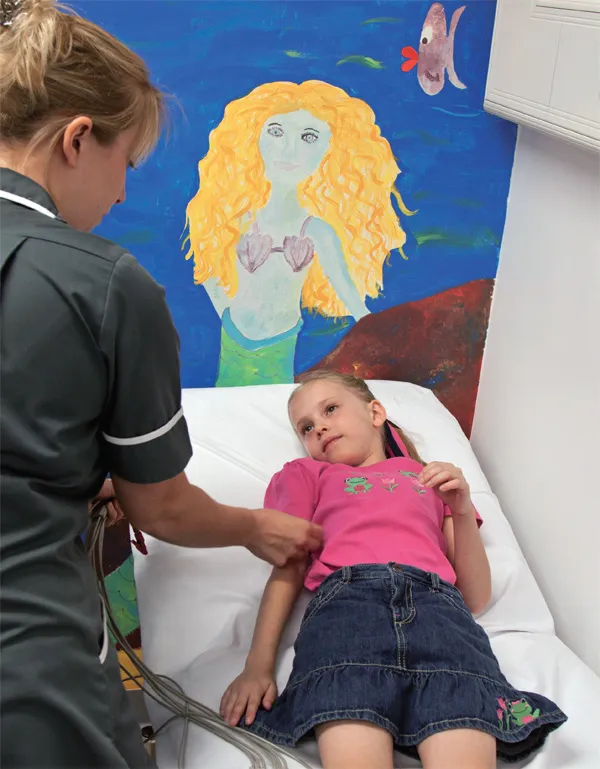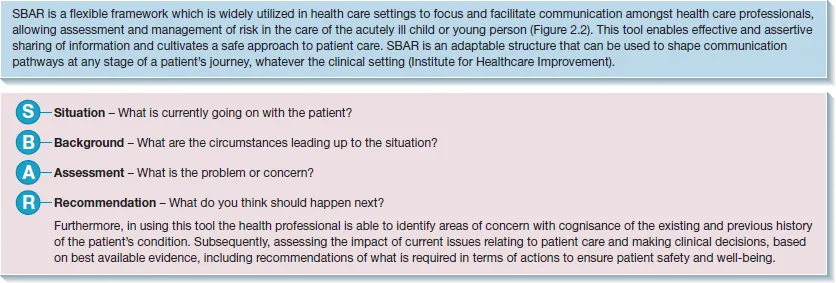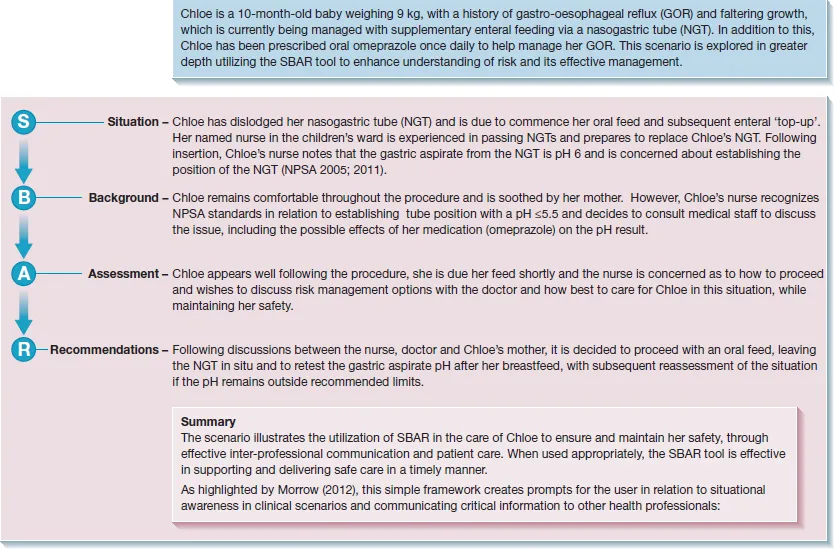
eBook - ePub
Children and Young People's Nursing at a Glance
Alan Glasper, Jane Coad, Jim Richardson, Alan Glasper, Jane Coad, Jim Richardson
This is a test
Partager le livre
- English
- ePUB (adapté aux mobiles)
- Disponible sur iOS et Android
eBook - ePub
Children and Young People's Nursing at a Glance
Alan Glasper, Jane Coad, Jim Richardson, Alan Glasper, Jane Coad, Jim Richardson
Détails du livre
Aperçu du livre
Table des matières
Citations
À propos de ce livre
Children and Young People's Nursing at a Glance, is the perfect companion for study and revision for pre-registration children's nursing students from the publishers of the market-leading at a Glance series. Divided into seven sections it explores assessment and screening, working with families, the newborn infant, the developing child, child health policy, nursing the sick child and young person and chronic and life-limiting conditions.
This comprehensive book is an invaluable resource for pre-registration nursing students as well as newly qualified nurses wanting to consolidate and expand their knowledge of children and young people's nursing.
- Breaks down complex aspects of child health care in an accessible and un-intimidating way
- The perfect revision and consolidation textbook
- Linked closely with the NMC standards for pre-registration nursing education, and the essential skills clusters framework
- Highly visual colour presentation, with approximately 130 illustrations
- Includes boxes, summary boxes, key points and recommendations for practice to improve the learning experience
- Supported by a companion website featuring over 500 interactive multiple choice questions ( www.ataglanceseries.com/nursing/children )
- Available in a range of digital formats - perfect for 'on the go' study and revision
Foire aux questions
Comment puis-je résilier mon abonnement ?
Il vous suffit de vous rendre dans la section compte dans paramètres et de cliquer sur « Résilier l’abonnement ». C’est aussi simple que cela ! Une fois que vous aurez résilié votre abonnement, il restera actif pour le reste de la période pour laquelle vous avez payé. Découvrez-en plus ici.
Puis-je / comment puis-je télécharger des livres ?
Pour le moment, tous nos livres en format ePub adaptés aux mobiles peuvent être téléchargés via l’application. La plupart de nos PDF sont également disponibles en téléchargement et les autres seront téléchargeables très prochainement. Découvrez-en plus ici.
Quelle est la différence entre les formules tarifaires ?
Les deux abonnements vous donnent un accès complet à la bibliothèque et à toutes les fonctionnalités de Perlego. Les seules différences sont les tarifs ainsi que la période d’abonnement : avec l’abonnement annuel, vous économiserez environ 30 % par rapport à 12 mois d’abonnement mensuel.
Qu’est-ce que Perlego ?
Nous sommes un service d’abonnement à des ouvrages universitaires en ligne, où vous pouvez accéder à toute une bibliothèque pour un prix inférieur à celui d’un seul livre par mois. Avec plus d’un million de livres sur plus de 1 000 sujets, nous avons ce qu’il vous faut ! Découvrez-en plus ici.
Prenez-vous en charge la synthèse vocale ?
Recherchez le symbole Écouter sur votre prochain livre pour voir si vous pouvez l’écouter. L’outil Écouter lit le texte à haute voix pour vous, en surlignant le passage qui est en cours de lecture. Vous pouvez le mettre sur pause, l’accélérer ou le ralentir. Découvrez-en plus ici.
Est-ce que Children and Young People's Nursing at a Glance est un PDF/ePUB en ligne ?
Oui, vous pouvez accéder à Children and Young People's Nursing at a Glance par Alan Glasper, Jane Coad, Jim Richardson, Alan Glasper, Jane Coad, Jim Richardson en format PDF et/ou ePUB ainsi qu’à d’autres livres populaires dans Médecine et Soins infirmiers en pédiatrie. Nous disposons de plus d’un million d’ouvrages à découvrir dans notre catalogue.
Informations

Part 1
Assessment and screening

1
Assessment of the child

Figure 1.1 Assessment of the child
Assessment is the collection of data, both subjective and objective, which aims to achieve a complete picture of the child’s health status. Good assessment is a combination of the interpretation of physical data with the information gained from observation of the child and family and from listening to them.
Interviewing – history taking
Gaining the trust of the child and family is an essential element in developing of an effective therapeutic relationship. Introducing yourself to the child and family with explanations of expected outcomes will put the child and family at ease. Age appropriate language should be used. Questions should be directed at both the child and parent. Young people should have an opportunity to talk in private if they wish. When taking a history, a structured approach should be used. This needs to include:
- Presenting complaint
- History of presenting complaint
- Past medical history (birth and neonatal history in infants and young children), immunizations, illnesses and hospitalizations
- Allergies
- Current medication
- Developmental history
- Family history
- Social history – nursery, school.
Observation – subjective data
Subjective data are what the child and parent say along with the visual information gained from the initial encounter with the child and family or while obtaining objective data (physical examination and recording of vital signs). This includes noting:
- The colour of the child: are they pale, mottled, cyanosed, jaundiced, flushed
- Behaviour: alert, crying, agitated, combative, lethargic, drowsy
- Interaction with parents/carers/strangers
- Interaction with environment, wanting to play or sleepy
- Position: normal, floppy or stiff
- The general appearance of the child: e.g. unkempt or clean
- Obvious birthmarks, bruises or rashes
- Dysmorphic features.
Measuring – objective data
All infants and children require a baseline physical assessment. This is a multifaceted process and some aspects are common to all children who require assessment of their health status. The physical assessment is concerned with the analysis and interpretation of data. Privacy and dignity should be maintained during this process. Consent should be obtained prior to undertaking a physical assessment.
Physical assessment includes:
- Basic physical recordings of temperature, pulse rate, respiratory rate, oxygen saturation and blood pressure
- Respiratory assessment, rate of breathing, depth of breathing, noise of breathing, presence of cough, chest movement, nasal flaring, use of other accessory muscles, child’s colour, ability to speak/feed, position of the child, peak flow and oxygen saturation level
- Heart rate including pulse volume
- Capillary refill time
- Neurological status using Glasgow coma scale or AVPU
- Level of hydration: obvious signs of dehydration include sunken anterior fontanelle, dull sunken eyes, dry oral mucosa, lethargy, weak cry, decreased urinary output
- Weight
- Height/length
- Head circumference
- Skin assessment using recognized pressure risk assessment tool
- Urinalysis.
All findings need to be documented as they are a legal record of the nursing assessment, the foundation on which care is planned and the basis of communication with multidisciplinary team.
Summary
Assessment is a dynamic continuous process that needs to include the child’s and parentor carer’s perspectives. Observation is as essential as physical assessment and good communication skills are important.
2
SBAR framework

Figure 2.1 SBAR framework

Figure 2.2 Simulated scenario using the SBAR tool
Inter-professional working
SBAR is a valuable communication tool when used either uniprofessionally or inter-professionally. For example during clinical placement the practice mentor may utilise this SBAR tool to provide feedback on the nursing student’s ability to prioritise using this flexible framework, when reporting on a patients’ condition and on their theoretical knowledge and problem-solving skills.
Additionally, effective understanding of collaboration and inter-professional working are essential elements within healthcare education and practice. During simulated inter-professional learning sessions, nursing and medical students are encouraged to reflect upon this situational briefing tool, which guides them to communicate important information in a predictable ...